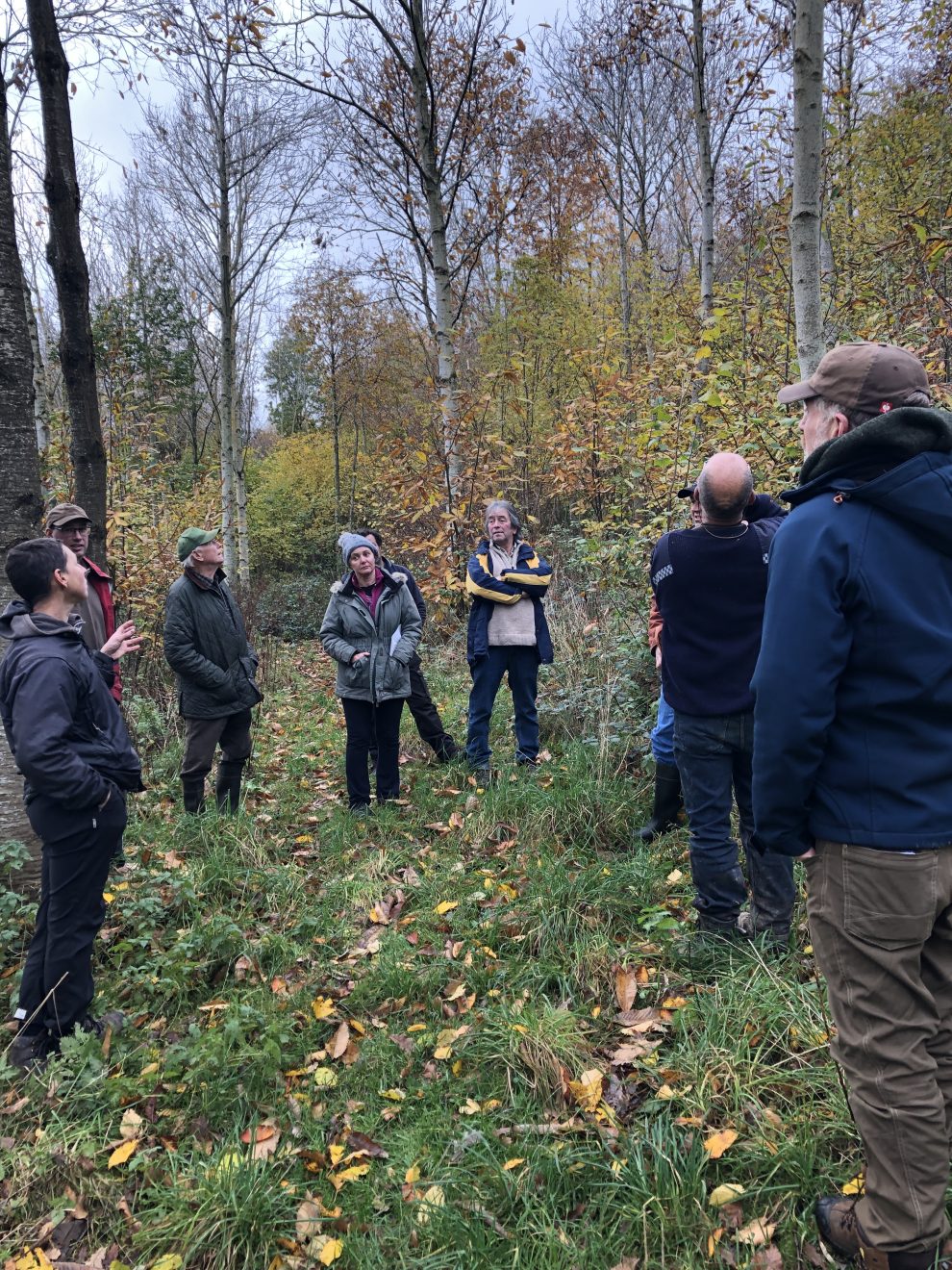Trees shape the appearance of the Welsh countryside, but their role extends far beyond the visual.
From mitigating the effects of drought and reducing soil erosion to capturing carbon and providing shelter for livestock, woodland can introduce resilience to farm businesses.
Planting and managing woodland doesn’t have to be complicated, as David Brown and Ruth Pybus are demonstrating at Bron Haul, near Abergele, Conwy.
In the 1990s, 40 of the 70 acres at Bron Haul were planted with mostly site native broadleaf woodland and in 2014 David and Ruth planted a further 10 acres.
The couple recently hosted a Farming Connect event when they shared their knowledge and experience with others who are considering integrating woodland into their own farming systems.
The woodland was planted with the main objectives of producing quality hardwood timber, improving biodiversity, aiding water management, carbon capture and storage, and building resilience into soils.
Attendees at the Farming Connect event were advised to have a “really positive vision’’ of what they wanted their woodland to achieve.
“Farmers are under a lot of pressure to plant woodland but we need to have a clear vision about what we want it to provide,’’ David suggested.
There is potential for trees to generate valuable income from timber but farmers are often put off from pursuing this diversification because they perceive that trees take a long time to grow.
“Cherry, sweet chestnut and ash that we planted in 1997 are already at that stage where they are producing planking timber and fencing posts,’’ David explained.
Timber has been used for making sweet chestnut stiles, wild cherry doors, planed ash and cherry flooring planks. Lower quality thinnings are supplied to local firewood merchants.
For livestock farmers, the edges of woodland also provide important shelter, a feature ever-more important as weather extremes increase in frequency – David and Ruth run a small beef herd at Bron Haul.
“Farmers will often ask how quickly they can introduce livestock into woodland but it is much better for the woodland, and ultimately much better shelter, if livestock get the shelter from the fringes,’’ said David.
David and Ruth are working on transitioning into a model of continuous cover forestry, growing trees of different ages to create woodland that is continually regenerating.
“Because of the age, structure and species diversity it is a very resilient woodland with robust shelter existing on the edges,’’ said David.
In 2022, Bron Haul won the Royal Forestry Society Farm and Small Woodlands Best of Best Award. David and Ruth run two-day woodland management courses on their farm.
Geraint Jones, Farming Connect Forestry and Farm Woodland Specialist, who facilitated the event at Bron Haul, said David and Ruth’s approach to planting trees had demonstrated that establishing woodland can be a viable option for farmers.
Mr Jones said it is important that farmers don’t ignore their green infrastructure as by optimising the benefits of woodland they can improve economic and environmental performance.
“Trees are an important means of reducing carbon emissions and improving livestock health and welfare through provision of shelter and shade,’’ he said.



















